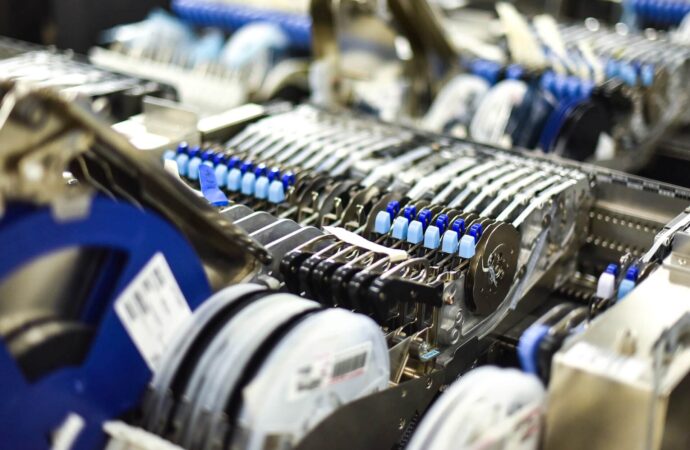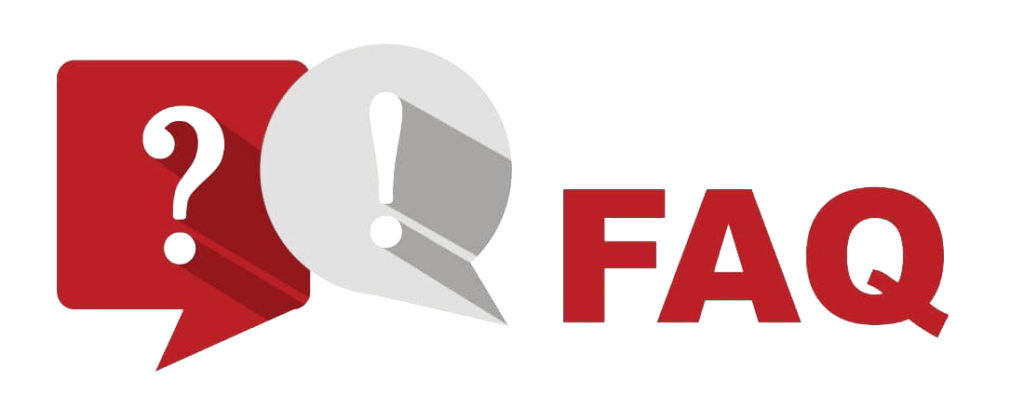The Best ISO Certification Service in San Diego, California (CA)
Contact Us

We are a diverse, passionate company committed to improving your organization and offering the best support to your stakeholders. From start-ups to multinationals, we at IQC The ISO Pros serve a wide spectrum of companies. We agree that this breadth of experience helps us to be a stronger team and enables us to offer content that meets the expectations of many companies that are happy to be our customers. We’re for you if the company wants to be ISO certified in San Diego, California (CA).
We’re here to satisfy our customers with prompt help. That’s why you’re just as likely to speak to our CEO or Director when you call us in San Diego, California (CA), as you’re part of our sales team. We believe that by working together, we can create something truly unique.
Customer feedback and experiences are the cornerstones of everything we do. Listening to our customers, we find that what they want is a flexible quality control framework that can help them maintain high standards of execution, compliance, and legislation while also delivering quick, intuitive steps.

About AS9100
AS9100 Revision D is a standard quality control framework for the aerospace industry. It is based on ISO 9001:2015 which lays out additional criteria unique to the aerospace industry. Originally written by the Society of Automotive Engineers, SAE International in 1999, it has since been updated from AS9000 to AS 9100. AS9100D is the most recent release.
AS9100 is the product of a combined project by numerous aerospace organizations, each with its quality control standards or specifications. The harmonization of their specifications, when utilizing as a framework ISO 9001, with its method methodology focus, contributed to the publication of AS9100 and ended the time where it was incredibly difficult to comply with the different requirements of these organizations.
ISO 9001:2015 Compliant or certified companies may comply with AS9100D by introducing additional standards that go above and beyond the standard specifications of ISO 9001 to maintain product safety and compliance. As for other standards such as ISO 9001 and ISO 14001, certification evaluations are carried out by registrars worldwide.
AS9100D Compliance
According to AS9100D, the QMS of your company must fulfill all criteria if you want to assert that it complies with this standard. Any condition is both general and obligatory and can only be omitted if it cannot be implemented. Also, you can remove or disregard a provision only if this does not undermine your organization’s capacity or obligation to ensure that its goods and services are in compliance and only if you can clarify and demonstrate why you cannot enforce it. In brief, it must be enforced if a rule may be applied.
However, how you want to satisfy each requirement, and to what degree, can rely on and affect several variables. It will rely on the context of your company, its structure, its operations, its goals, its compliance requirements, and its goods and services, and will be affected by its threats and opportunities. Quality control programs may also differ quite a bit.
Who may use AS9100D?
AS9100D may be used by both internal and external parties in San Diego, California (CA). It may be seen by both retailer and consumer companies as well as internal and external auditors. AS9100D can be utilized by companies in the transportation, aerospace, and security industries and can be used in the supply chain. It is intended for usage by companies that plan, grow and produce aircraft, space and security goods, and services. It is also for organizations that have post-delivery assistance. This excludes those supplying repairs, materials, or replacement parts for their goods and services.
AS9100D can also be used by recipients of transportation, space and security goods, and services. It will be utilized by customers who like to be confident that the goods and services they receive regularly satisfy their expectations and specifications. Any company can use it to develop and sustain an efficient and effective approach to the distribution of products and services across its entire supply chain. AS9100D can also be used by internal and external auditors to measure the reliability, efficacy, and adequacy of quality control processes and to determine the consistency and compliance of every supplier.
Why use AS9100D?
Use AS9100D to enforce strategies, accomplish goals, fulfill commitments, mitigate uncertainties, take advantage of opportunities, and comply with all applicable legislative and regulatory criteria. Use it if: you need to be able to demonstrate that the company is reliably capable of producing goods and services that satisfy customer needs and comply with all applicable legislative and regulatory requirements. You ought to be willing to show that the company can boost customer loyalty because it is continually capable of constantly enhancing both its goods and services and its procedures and processes. You ought to be able to evaluate the organization's capacity to reliably provide goods and services that satisfy customer needs and conform with all applicable legislative and regulatory requirements.
What's AS9101?
AS9101, Quality Control Systems – Audit Criteria for Aircraft, Space, and Security Organisations, are procedures utilized by the Certification Body to describe the examination report to be submitted after any certification, monitoring, or re-certification audit has been performed. This protocol involves a review of all the AS9100 clauses reviewed as part of the audit and a scoring mechanism to help evaluate the efficacy of the QMS structures and procedures during the audit. The latest revision is AS9101 Rev F (against AS9100 Rev D), however, AS9101 Rev E is also in usage for audits in QMS programs that have not yet been transitioned (until September 15, 2018).
This standard is important because any business that is certified against AS9100 is classified in the International Aerospace Quality Community (IAQC) Online Aerospace Supplier Information System (OASIS) database. The ranking, dependent on the evaluation of the AS9101 checklist, is included in this database which helps customers to determine the variations in the efficacy of the AS9100 implementation of their supplier.
What's AS9102?
First Article Inspection (FAI) is a method that will verify the production process by delivering a [product that satisfies the specifications as expected. In the aerospace and security industry in the U.S., several companies carry out AS9102 first article inspections. Some companies often use checks to verify their manufacturing procedures but differ from company to company in the format and where they are done in the development phase.
AS9102 is the SAE prerequisite (written by the International Aerospace Quality Community, IAQG) which regulates the first articles in San Diego, California (CA). The AS9102 standard describes the first article inspection as 'a scheduled, full, independent and recorded inspection and verification method to ensure that the prescribed manufacturing processes have created an item conforming to engineering drawings, DPD, preparation, purchasing order, engineering specifications, and/or other relevant design documentation. (Ref 9102 Rev B, Sec 3.10.) First Article inspection report, 'Types and packages of documentation for part amount, subassembly or assembly, including related FAI performance, as specified in this standard' (Ref 9102 Rev B, Sec 3.11.)
Requirements of AS9102
With all the specifications set out in the AS9102 revision and with all the various fields protected by this type, it may appear challenging to understand which parts of the form one must complete before applying it. The team who created this revision has already thought about this phase, listing three qualifications to help you appreciate what is required. At IQC The ISO Pros in San Diego, California (CA), we have become experts in these.
The first is shown as needed and is displayed in the form with the letter ‘R.’ Some of the fields required to include the part amount, part name, association name, complete FAI report, signature, and date.
The second is indicated as conditionally necessary, symbolized by the letter ‘CR.’ Certain fields are mandatory when certain procedures are finished or certain methods are employed. Any areas that could be deemed conditionally needed include drawing numbers, additional method improvements, design changes, and specialized resources.
The last qualifier noted on the AS9102 is indicated as optional, symbolized by the letter ‘O.’ This detail is valuable for record-keeping but is not needed to complete the document. Examples of optional details include the name of the individual who prepared the first Article Inspection, the name of the person who accepted the FAI, the date on which the FAI was registered, and the name of the customer who authorized it.
How can you grasp the three standards that support your QMS?
As you can see from the above, these three standards can assist you specifically with the execution of your QMS. If you need a new method for either first article inspection or variance management, AS9102 or AS9103 can instruct you on the best practices for both of these processes inside your QMS. Understanding AS9101 will provide you with additional details about what the certification body wants to evaluate to determine the efficacy of the QMS programs and processes. This knowledge can include advice in which places it may be of concern to you to assess efficacy as well. If this is the standard of performance for the aerospace industry, you will also benefit from it.
The key point to note is this: these standards are optional for certain companies. If the contracts are not mandated, the usage of certain standards can only be performed for the good of the company, not that anyone feels that AS9100 deserves it. Using only what you need for increased QMS performance and improvement, is the very reason that IQC The ISO Pros in San Diego, California (CA) builds you a QMS in the first place.
Comparing AS9100 with ISO 9001:2015
As a foundation for its specifications, AS9100 uses the ISO 9001 standard and incorporates some requirements and notes that are unique to the aircraft, aerospace, and defense sectors. This makes it easy to transition from ISO 9001 to AS9100. It is also possible to incorporate a QMS compatible with both ISO 9001 and AS9100 certification for areas participating in the aerospace industry.
Both ISO 9001:2015 and AS9100 Rev D are focused on Annex L’s high-level layout, providing a common framework for all ISO management systems. Annex L aligns the varying standards of the management system, corresponds with subclauses, and uses a shared vocabulary to promote the transition.
The Plan-Do-Check-Act (PDCA) cycle, which can be extended to all procedures (Clauses 4-10) and the QMS as a whole, is another great advantage of the updated standards.
Compared to ISO 9001:2015, what are the extra requirements?
You will see the additional AS9100 specifications in italics when switching from ISO 9001 to AS9100. There are several fields of extra criteria, but the largest variations in the two standards are the following:
- Job Realization Planning – This requires extra criteria for project management, risk management, product setup management, and task transition monitoring. Throughout the criteria of the standard, risk detection and evaluation were carried out as risk is important for the aerospace industry.
- Purchasing and Purchased Product – This segment provides several additional supplier management criteria.
- Provision of Development and Service – This subject has the most AS9100 shifts. The explanation is that this is the largest disparity from one field to the other. Changes involve manufacturing procedures, as well as the necessary restrictions on manufacturing facilities and post-delivery assistance.
- Non-Conforming Protocols – AS9100 provides more detailed requirements for how to cope with non-conformances and how to enforce action on systems and goods, and what remedial steps are to be taken if a non-conformance is observed.

FAQ’s
Input has been received from professionals and consumers of the standard from around the world in creating this set of Frequently Asked Questions (FAQs) for the 9100:2016 sequence revisions. The list is periodically revised and modified to ensure its consistency and, where appropriate, to include new queries. This list is meant to provide a good source of knowledge for potential consumers of the standards as well.
Unique recorded protocols are no longer mentioned; it is the organization's duty to preserve documented records to ensure the execution of its processes and to keep the documented information required to remain assured that the processes are being carried out as expected. The complexity of the paperwork that is required would rely on the company. A quality manual is not strictly needed anymore. The current standard allows the company to retain detailed records required for the quality management system (QMS) to be efficient. There are several approaches to do this and only one is a quality manual. That is entirely reasonable if it is convenient and necessary for a company to proceed to define its quality management system in a quality manual. In clause 4.4.2, the 9100:2016 standard introduced specifications that contained, in addition to providing new detail, the previous quality manual requirements. If you have legislative, regulatory, or customer specifications to retain a quality manual, the company must adhere. How did the standards for reporting change?
A quality manual is not specified in the standard, but is it still required?
History of AS9101
If you did not realize, the initial edition of AS9101 was first released in the year 2000 with the material first targeted at defining and addressing business appraisal companies, initially based on the AS9100: 1999 standard. It then developed and was revised, up to the Aerospace AS9101F, the modern and the newest edition.
Benefits of AS91011 Aerospace
At IQC The ISO Pros in San Diego, California (CA), will get you to the advantages easily if you are unsure about whether or not to get an Aerospace AS9101 certification. Any business engaged in the production, construction, study, service, or repair of spacecraft or aircraft typically requires Aerospace AS9101 certification. Many companies, especially organizations in the AS&D market, claim that the AS9101 standard is not an essential part of their company, since having an AS9100 certification is like being certified by an agency or a body that addresses overall aerospace quality and management auditing.
If it comes to certification, the ranking earned by a single company or entity relies on the AS9101 checklist. Advantages include:
- With a few adjustments, it has set the standards to address the problems confronting manufacturers in providing goods and services to numerous customers of various qualities.
- Aerospace AS9101 establishes the framework for international standards for the standardization of aircraft or spacecraft modifications or repairs.
- It is included in the global fields of defense, aerospace, and aviation. The findings require consistency in all these fields. It serves as a promise of the safety and security of the goods in this industry.
- It controls the aeronautics and astronautics industry’s audit phase in every possible way. One such solution is to delegate the tasks to the stakeholders. Identifying roles helps.
- Procedural compliance and rigorous maintenance are assured by the audit at any level. By presenting main success metrics aligned with the priorities and aims of the whole process, it helps in regulation
- At any stage, events are scheduled. Means are specified for achieving the outcomes. The technique is being developed.

